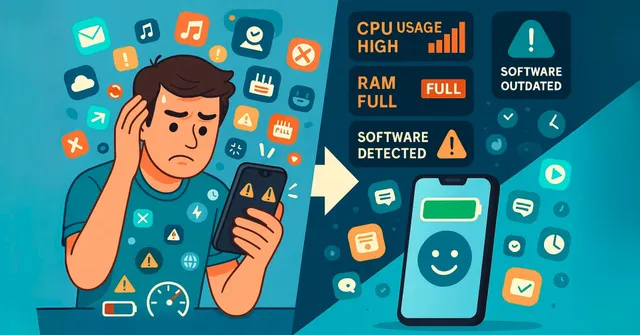

What is Bubble?
Bubble refers to the concept of an economic or financial bubble, which is characterized by a rapid increase in the price of an asset or class of assets, followed by a sudden and significant decrease in their value. It is essentially a market phenomenon where the prices of certain assets, such as stocks, real estate, or cryptocurrencies, become detached from their intrinsic value and rise to unsustainable levels.
During a bubble, investor enthusiasm and speculative behavior drive up prices beyond what can be justified by fundamental factors, such as earnings, cash flows, or market demand. The bubble continues to inflate as more and more investors are drawn into the market, often fueled by the expectation of quick profits. However, at some point, the bubble bursts, leading to a sharp decline in prices and substantial losses for those caught in the market frenzy.
Bubbles can be triggered by various factors, including excessive optimism, speculation, easy access to credit, herd mentality, and the lack of regulatory oversight. The most famous historical examples of bubbles include the dot-com bubble of the late 1990s, the housing bubble that led to the global financial crisis in 2008, and the cryptocurrency bubble of 2017.
Bubble Key Features
The key features of a bubble are as follows:
Rapid price appreciation: Bubbles are characterized by a rapid and unsustainable increase in the prices of assets. Prices can skyrocket in a short period, often driven by speculative buying and investor enthusiasm.
Disconnect from underlying fundamentals: During a bubble, asset prices become detached from their intrinsic value or underlying economic fundamentals. The prices are driven more by speculation and investor sentiment rather than by the asset’s actual value or potential returns.
Widespread investor participation: Bubbles often attract a large number of investors who are drawn by the prospect of quick and significant profits. As more investors jump into the market, the demand for the asset increases further, fueling the price escalation.
Herd mentality: Bubbles are characterized by a herd mentality, where investors tend to follow the crowd and believe that prices will continue to rise indefinitely. This behavior can lead to a self-reinforcing cycle of buying, further inflating the bubble.
Lack of rationality and caution: During a bubble, rational decision-making based on fundamental analysis is often disregarded. Investors may ignore warning signs, such as excessive valuations or high levels of debt, and instead focus on the potential for continued price appreciation.
Increased leverage and speculation: Bubbles can be fueled by excessive borrowing and speculative behavior. Investors may take on high levels of debt or leverage their positions to maximize their potential gains, further amplifying the bubble’s effects.
Eventual collapse and price correction: Bubbles are unsustainable by nature, and at some point, the bubble bursts. This can be triggered by a variety of factors, such as a change in market sentiment, regulatory intervention, or a realization of the asset’s overvaluation. The collapse leads to a sharp decline in prices, often resulting in significant financial losses for investors involved in the bubble.
Features are commonly associated with bubbles, not every market increase or asset price surge represents a bubble. It requires careful analysis and consideration of various factors to identify a true bubble situation.
How Does Bubble Work?
Bubbles typically follow a cycle that involves several stages. Here is a general overview of how a bubble works:
Expansion phase: The bubble begins with a period of optimism and enthusiasm about a particular asset or class of assets. This could be driven by factors such as new technologies, economic trends, or a perception of high potential returns. As investors start buying the asset, its price starts to rise.
Positive feedback loop: As prices increase, it attracts more investors who fear missing out on potential gains. This creates a positive feedback loop where rising prices lead to more buying, further driving up the prices. The increased demand for the asset pushes prices higher, even if it surpasses the asset’s intrinsic value.
Speculative behavior: As the bubble expands, speculative behavior becomes prevalent. Investors start buying the asset primarily with the expectation of selling it at a higher price, rather than considering its underlying value. This behavior fuels further price escalation.
Peak and euphoria: The bubble reaches its peak during this phase. Prices may skyrocket to extreme levels, often driven by irrational exuberance and widespread optimism. Media attention and public enthusiasm for the asset can also contribute to this euphoria.
Triggering event: At some point, a triggering event occurs that causes a shift in market sentiment. It could be a negative economic indicator, regulatory intervention, a significant failure or scandal, or simply a realization that the asset’s prices have become disconnected from reality. This event shakes investors’ confidence and leads to a reversal in sentiment.
Panic and selloff: The triggering event triggers panic among investors, leading to a rush to sell the asset. Prices start to plummet rapidly as supply exceeds demand. This can result in a sharp and significant decline in prices, wiping out a substantial portion of the gains made during the bubble.
Deflation and aftermath: Following the collapse of the bubble, there is a period of deflation and price correction. Asset prices may stabilize at a significantly lower level, often closer to their intrinsic value. Many investors who bought during the peak suffer substantial losses, and some may face financial distress.
Distinguishing between a genuine investment opportunity and a speculative bubble requires careful analysis, consideration of fundamentals, and an understanding of market dynamics.
Bubble Pricing
Bubble pricing refers to the inflated prices of assets during a speculative bubble. In a bubble, asset prices can become detached from their intrinsic value, leading to exaggerated valuations that are not supported by fundamental factors such as earnings, cash flows, or market demand.
During the expansion phase of a bubble, prices start to rise rapidly due to factors such as investor enthusiasm, speculation, and the expectation of quick profits. As more investors enter the market and demand for the asset increases, prices continue to climb. This can create a feedback loop where rising prices attract more buyers, driving the prices even higher.
Bubble pricing often exhibits characteristics such as:
Excessive valuations: Asset prices become significantly higher than their historical averages or reasonable valuations based on fundamental analysis. The price-to-earnings (P/E) ratios or price-to-sales (P/S) ratios of stocks, for example, may reach levels that are far above historical norms.
Irrational investor behavior: Investors may exhibit a herd mentality, buying assets solely based on the belief that prices will keep rising, rather than considering their intrinsic value or potential risks. This behavior can lead to further price inflation and detachment from reality.
Speculative buying: Investors may enter the market primarily for speculative purposes, aiming to sell the asset at a higher price rather than based on its fundamental value. This speculative behavior fuels the bubble and contributes to the exaggerated pricing.
Lack of correlation with fundamentals: Bubble pricing is characterized by a significant divergence between the asset’s price and its underlying economic or financial fundamentals. This discrepancy suggests that the price is being driven by speculative factors rather than intrinsic value.
Bubble pricing is unsustainable and carries significant risks. When a bubble eventually bursts, prices can plummet, resulting in substantial losses for investors who bought at inflated prices. Therefore, it is crucial for investors to exercise caution and conduct thorough analysis before making investment decisions during periods of potential bubble pricing.
Bubble Customer Service
Bubble Customer Service typically refers to the customer support and assistance provided by Bubble, a visual programming platform that allows users to build web applications without coding. While Bubble is a specific platform, the principles of customer service can apply to any company or organization that offers customer support.
Bubble Customer Service involves various activities aimed at helping users of the platform to resolve issues, answer questions, and provide guidance. Here are some key aspects of Bubble Customer Service:
Help Desk Support: Bubble may provide a help desk or support center where users can submit their inquiries, problems, or requests for assistance. This can be in the form of a ticketing system or email support, allowing users to describe their issues and receive timely responses from the support team.
Knowledge Base and Documentation: Bubble may offer a comprehensive knowledge base or documentation resources, including tutorials, guides, FAQs, and articles that cover various aspects of using the platform. These resources can help users find answers to common questions and learn how to navigate and utilize Bubble’s features effectively.
Live Chat or Online Community: Bubble may provide a live chat feature or an online community forum where users can interact with support representatives or fellow users. This allows for real-time communication and the opportunity to get immediate assistance or engage in discussions about specific topics related to Bubble.
Bug Reporting and Issue Resolution: Bubble Customer Service involves addressing technical issues and software bugs that users may encounter while using the platform. Users can report any problems they encounter, and the support team works to investigate and resolve those issues in a timely manner.
Feature Requests and Feedback: Bubble may encourage users to provide feedback and suggestions for improving the platform. This can be done through feedback forms, forums, or other channels. Customer Service representatives may actively gather user feedback and relay it to the appropriate teams for consideration.
Training and Onboarding: Bubble may offer onboarding materials or training resources to help new users get started with the platform. This can include tutorials, webinars, or personalized training sessions to ensure that users have a smooth learning experience.
Bubble Customer Service focuses on providing timely and effective support to users, addressing their concerns, and helping them make the most of the platform’s features and capabilities.
Who is Bubble For?
Bubble is a visual programming platform that is designed for a wide range of individuals and organizations who want to build web applications without coding. Here are some groups of people who might find Bubble useful:
Non-technical individuals: Bubble is particularly suitable for individuals who don’t have a background in programming or software development but still want to create their own web applications. The platform’s visual interface and drag-and-drop functionality make it accessible to those without coding knowledge.
Entrepreneurs and startup founders: Bubble can be a valuable tool for entrepreneurs and startup founders who have an idea for a web application but lack the technical expertise to build it from scratch. With Bubble, they can bring their ideas to life and test their concepts without relying on external development resources.
Small businesses and startups: Small businesses and startups with limited resources or development teams can leverage Bubble to develop and deploy web applications more efficiently. It allows them to iterate quickly, customize their applications, and save costs compared to hiring dedicated developers.
Solopreneurs and freelancers: Bubble offers an opportunity for solopreneurs and freelancers to create web applications for their own businesses or as part of client projects. They can build custom solutions tailored to their specific needs without having to rely on external developers.
Prototyping and MVP development: Bubble can be used for rapid prototyping and Minimum Viable Product (MVP) development. It allows users to quickly create functional prototypes and test their ideas before committing significant resources to full-scale development.
Citizen developers: Bubble caters to the concept of citizen developers, empowering individuals within organizations to create applications for their teams or departments without requiring extensive coding skills. This enables departments to streamline their processes, automate tasks, or build custom tools.
Educational institutions: Bubble can be utilized by educational institutions, such as universities or coding bootcamps, to teach students the fundamentals of web application development. Its visual approach simplifies the learning process and provides hands-on experience with building applications.
While Bubble aims to make web application development more accessible to non-technical users, it’s worth noting that complex or highly specialized applications may still require traditional coding or the involvement of professional developers.
Is Bubble Worth It?
The value of using Bubble as a web application development platform depends on various factors and individual needs. Here are some considerations to help you determine if Bubble is worth it for you:
No coding requirement: If you don’t have coding experience or find traditional programming challenging, Bubble can be a valuable tool. It allows you to create web applications using a visual interface and drag-and-drop functionality, eliminating the need to write code.
Faster development: Bubble’s visual programming approach enables faster development compared to traditional coding. It provides pre-built components and workflows that can be customized, allowing you to build functional web applications more efficiently.
Cost savings: Using Bubble can potentially save costs, especially if you would otherwise need to hire developers or external agencies to build your web applications. By using Bubble, you can create applications in-house, reducing expenses associated with outsourcing development.
Iterative development and prototyping: Bubble facilitates rapid prototyping and iterative development. You can quickly build and test ideas, make changes on the fly, and gather feedback. This agility can be valuable when iterating on your application or validating concepts.
Customizability: Bubble allows for a high level of customization, giving you control over the appearance and functionality of your web applications. You can tailor your application to meet specific requirements and user preferences without relying on pre-packaged templates.
Limitations for complex applications: While Bubble is powerful for many use cases, it may have limitations for complex or highly specialized applications. If your project requires advanced functionality or integration with specific APIs or systems, you may find that traditional coding or working with professional developers is necessary.
Learning curve and support: Bubble has a learning curve, particularly if you’re new to visual programming or application development. Consider your willingness to invest time in learning the platform and utilizing available support resources, such as documentation, tutorials, and community forums.
Whether Bubble is worth it for you depends on your specific needs, technical requirements, budget, and the time you’re willing to invest in learning and utilizing the platform. It can be a valuable tool for individuals or organizations seeking to build web applications without coding, but it’s important to assess how well it aligns with your project goals and evaluate alternatives if necessary.
Conclusion
In conclusion, Bubble is a visual programming platform that enables individuals and organizations to build web applications without coding. It offers a user-friendly interface, drag-and-drop functionality, and a range of customization options. Bubble can be particularly beneficial for non-technical individuals, entrepreneurs, small businesses, and those seeking to prototype or develop Minimum Viable Products (MVPs). It can save costs, accelerate development timelines, and provide the flexibility to iterate on ideas.
However, it’s important to consider the limitations of Bubble, especially for complex or highly specialized applications that may require traditional coding or advanced integrations. Additionally, there is a learning curve associated with using the platform, and users should be prepared to invest time in learning and utilizing the available support resources.
Whether Bubble is worth it for you depends on your specific needs, technical requirements, budget, and the willingness to learn and leverage the platform’s capabilities. Consider your project goals and evaluate how Bubble aligns with them, while also exploring alternative options if necessary.



